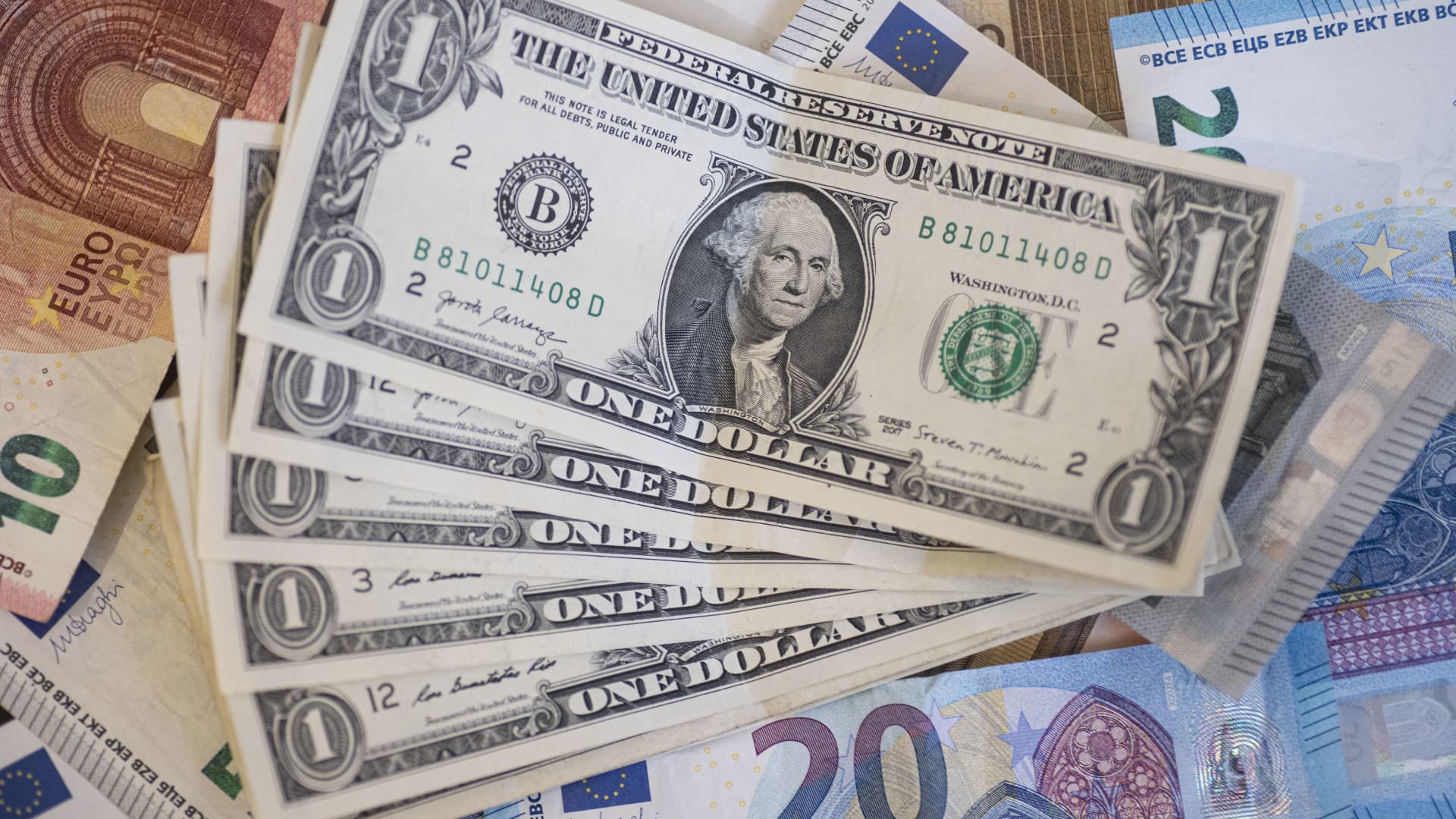The U.S. dollar has surged since September, but some financial institutions are suggesting investors should bet against further strength in the greenback. Investment bank UBS has taken a contrarian stance, warning investors not to chase the dollar’s recent gains. “We caution against chasing USD strength; instead, we suggest selling dollar upside potential for yield pickup,” said UBS Wealth Management strategists led by Dominic Schnider in a Dec. 2 note to clients. The dollar’s dramatic rise took place in two phases. The U.S. Dollar Index , which measures the value of the US dollar relative to a basket of world currencies, rose by about 4% from the end of September to November, as economic data showed that the U.S. was outperforming other major economies. A second surge — another 3% gain — followed Donald Trump’s election victory, as investors bet on his promised growth-focused policies. .DXY YTD line However, UBS argued that markets have already factored in most of the positive news for the dollar, while investors have essentially ignored much of the risks associated with the trade tariffs espoused by the incoming U.S. administration. The investment bank holds that Trump’s policies on trade tariffs and restricted immigration are likely to be negative for U.S. economic growth in the long term, with lower interest rates expected to follow. “While there has been a lot of coverage about US tariffs, possible retaliatory measures by affected countries have yet to hit the headlines,” the UBS research note said. “We say this from a backdrop of the dollar’s extraordinarily rich valuation in trade-weighted terms.” “This makes the USD a sell for us on any additional spikes, in our view, rather than adding to long positions. Put differently, we see value in a contrarian bias for most currency pairs,” the bank’s strategists added. London-based Longview Economics echoed this view, suggesting that investor optimism about the greenback might have reached unsustainable levels. Sentiment toward the dollar “is currently at extreme (bullish) levels, while U.S. consumer confidence about the outlook for the stock market hit a 40-year high just last week,” Chris Watling, founder and Chief Market Strategist at Longview Economics, flagged in a note to clients. Watling pointed to defensive currencies like the Swiss franc as potentially attractive alternatives that investors can use to either hedge or short against the dollar. Short selling takes place when an investor bets on the price of an asset falling. The trades UBS suggested selling the downside against the euro falling below $1.05, the British pound dropping below $1.25 and the Australian dollar slipping below $0.63. The bank also said it favors buying the Swiss franc above 0.90 against the dollar. Not all currencies are equally positioned to benefit if the dollar weakens. UBS specifically warned about currencies with high export exposure to the U.S., such as the Canadian dollar and Mexican peso. “The same cannot be said for currencies with high export exposure to the US, like the CAD and the MXN, or where tariffs can shoot up, like for China,” the bank said. “Here, we would simply hedge FX risks.”

Is it time to short the dollar? UBS and others think so